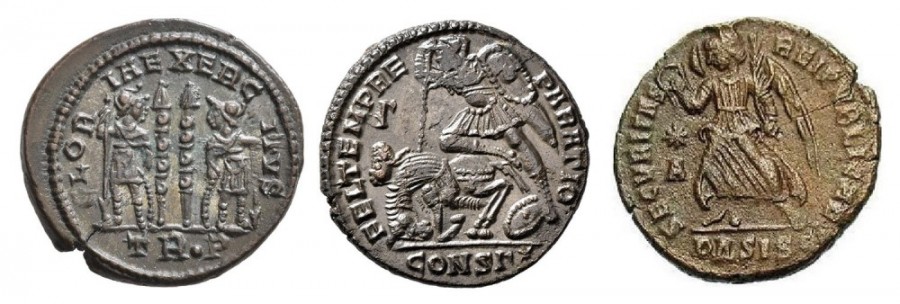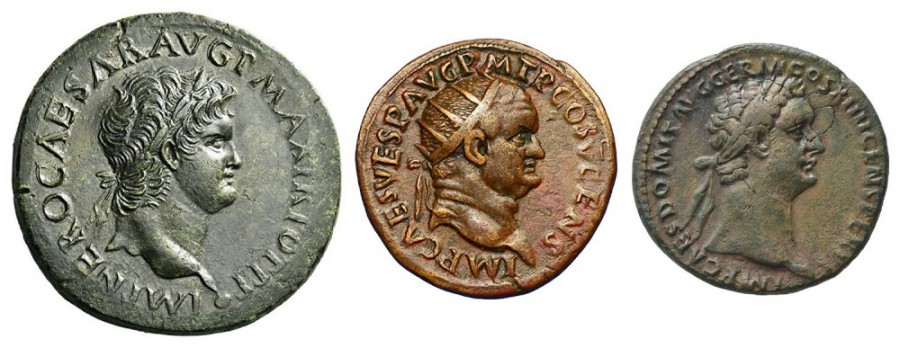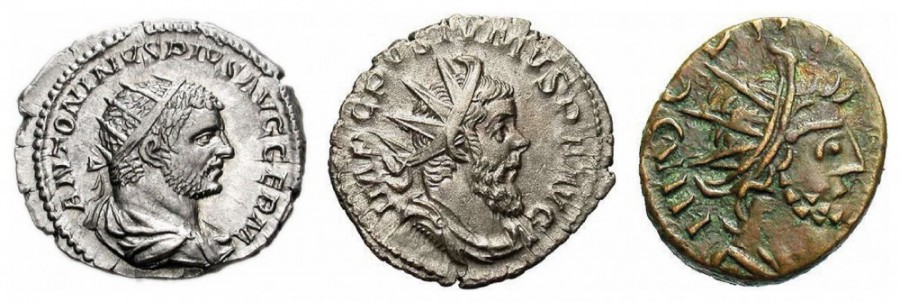Please see the How to use the Roman Coin Identification Template before using the Template.
The reporting of Roman coins occurs at the assessment and analysis stages of a fieldwork project.
The Toolkit for Finds Reporting: Roman Coinage provides a Microsoft Excel Workbook that contains resources to enable the standardised identification and quantification of Roman coins throughout a fieldwork project. The Roman Coin Identification Template + Resources workbook includes the following sheets:
- ADS_spreadsheet_metadata
- Roman Coin ID Template
- Emperor/Issuer list
- Denominations list
- Mints list
- Roman Coinage Issue Periods sequence
These Toolkit resources implement the FAIR Guiding Principles in the recording of Roman coin identifications (Findability, Accessibility, Interoperability, and Reuse of digital assets).
ADS_spreadsheet_metadata
Coversheet for the Roman Coin Identification Template, containing the file-level metadata required by the Archaeology Data Service (ADS) to archive and disseminate data. Follows the Microsoft Excel template and examples provided on the ADS Guidelines for depositors webpages (Version 4.1 April 2021).
The File Name entries should be completed before the workbook is submitted to OASIS and the ADS (Sheet name and Field name entries are pre-populated).
The ADS does not recognise .xlsm files among the preferred or accepted file formats for archiving, and the completed file should be saved as an .xlsx, .xls, or .csv file before it is submitted to the project archive. This is best done using the blue button on this coversheet.
Roman Coin Identification Template
The second sheet in the Roman Coin Identification Template + Resources Excel workbook, which can be converted to other spreadsheet, database or word processing programs.
The Roman Coin Identification Template has been created to facilitate the standardised identification of Roman coins.
The Template is designed to be compatible with most Content Management Systems (CMS) currently in use by museums, archives, contracting archaeological organisations and national heritage services. It is a simple task to produce publishable catalogues of Roman coins from the Template too.
The Roman Coin Identification Template is divided into 15 Primary fields and a further 6 Secondary fields:
- Primary fields indicate information that is considered essential for most coin lists and reports (although it might not be possible, or necessary, to fill in every field)
- Secondary fields include additional data that are considered non-essential for most archaeological projects
See the Glossary for explanations of the Roman Coin Identification Template’s primary and secondary fields.
Emperor/issuer list
The third sheet in the Roman Coin Identification Template + Resources Excel workbook.
The dropdown list of emperors and issuers includes 237 options that can be selected for the EMPEROR / ISSUER Primary field on the Roman Coin Identification Template. These include just about every emperor, empress, prince and usurper in whose names coins were struck.
It also contains entries that are useful in instances when it is not possible to identify an emperor or issuer from the portrait or legend on the obverse of a coin – for example, ‘Uncertain (Flavian)’, ‘House of Constantine’, or ‘Uncertain (late 3rd/4th century)’.
Selecting an emperor or issuer in the EMPEROR / ISSUER field will automatically populate the DATE, DATE FROM, DATE TO and IP Primary fields. These can be changed manually as necessary, for example if a coin can be dated more closely to a year, or years, in an emperor’s reign.

© Peter Guest
The 4th century saw a number of currency reforms (in 317, 330, 348, 364, 378 and 388), and coins from this period should be dated according to their reverse types (where known), rather than by the imperial dates of the ruler on their obverses. For instance, an AE3 bronze coin issued in the name of Constantine I with the GLORIA EXERCITVS – 2 standards reverse type, should be dated to 330–335, when this reverse was in production, rather than the years 307–337 when Constantine I was Augustus. Therefore, the DATE, DATE FROM, DATE TO and IP Primary fields will need to be completed manually for most 4th century coins.
Denominations list
The fourth sheet in the Roman Coin Identification Template + Resources Excel workbook.
Thirty denominations issued by the Roman imperial mints can be selected from the dropdown list.
The names of the denominations in the Augustan currency system are known and include the aureus, denarius, sestertius, dupondius and as (fractions of the as are rare in Britain, but are included in the Denominations list).

In 215, the emperor Caracalla introduced a new silver coin that seems to have been valued at 2 denarii. This is sometimes referred to as the ‘antoninianus’, but there is no evidence that it was called by this name and radiate is used here instead (from the sun’s rays on the crown worn by the obverse portrait). The radiate replaced the denarius from the 240s, but quickly became debased and was issued in very large quantities for most of the rest of the 3rd century. Radiates and their irregular copies are very common finds from Romano-British settlements.

Diocletian’s monetary reforms around 294 replaced the previous coinage with a new currency system, including a new silver denomination (argenteus), as well as a new suite of low-value copper-alloy denominations. Later reforms during the 4th century saw the introduction of new gold and silver denominations (solidus, miliarensis and siliqua), as well numerous reforms of the bronze coinage.
We do not know the names of the 4th century small-change denominations, but in older catalogues and reference works those from the Tetrarchy (294–317) were commonly (but erroneously) referred to as folles (sing. follis). Because of this uncertainty regarding names, 4th-century bronze coins tend to be referred to with the generic term nummi (sing. nummus, which can be selected from the dropdown list). It is useful, however, to indicate the varying sizes of the common bronze coins from the 4th century and AE1, AE2, AE3, AE4 and AE4 minim can be selected (also for earlier bronzes whose denominations cannot be identified):
- AE1 = diameter greater than 25mm
- AE2 = 19–25mm in diameter
- AE3 = 14–18mm in diameter
- AE4 = 14-5mm in diameter
- AE4 minim = diameter less than 5mm
Mints list
The fifth sheet in the Roman Coin Identification Template + Resources Excel workbook.
Thirty-seven mints where Roman coins were struck can be selected from the dropdown list.
Roman Coinage Issue Periods
The sixth sheet in the Roman Coin Identification Template + Resources Excel workbook.
The Roman Coinage Issue Periods sequence (RCIP, or just Issue Periods – IP) is provided to facilitate the standardised quantification of Roman coins. This subdivides the history of Roman coinage from the Republic to the 5th century into 22 ‘periods’ of similar lengths (first adapted in its current form in the early 1970s), and the sequence has become the most common method of summarising a Roman coin assemblage.
Allocating coins to the RCIP sequence depends on identifying their dates of production (ie, striking at the mints). The RCIP sequence provided for this Toolkit indicates how contemporary imitations (ie, copies and forgeries) should be allocated. In most cases, these coins are assigned to the same IPs as their prototypes (eg, Claudian copies and 4th century copies), though radiate copies should be assigned to IP14 (275–296), rather than IP13 (260–275).
For most assemblages there will be some coins whose production cannot be closely dated – eg, ‘Uncertain (late 3rd/4th century)’ – while for others there might be some ambiguity about when they were struck. Although such coins cannot be included in a site’s RCIP sequence, they should be recorded elsewhere in a coin report (eg, summary table of site-finds).
It should be noted that tables and charts representing an assemblage according to IP show when these coins were struck at the mints, which is very likely to be significantly different to when they might have been in circulation and available to be used and lost.



